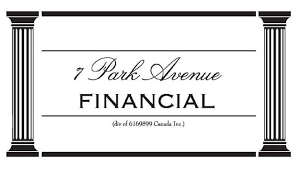|
Asset-Backed Lending: Why Smart Canadian Firms Choose Collateral Financing
Transform Business Assets into Immediate Funding
YOUR COMPANY IS LOOKING FOR AN ASSET-BASED LINE OF CREDIT METHOD OF FINANCING!
You've arrived at the right address! Welcome to 7 Park Avenue Financial
Financing & Cash flow are the biggest issues facing business today
ARE YOU UNAWARE OR DISSATISFIED WITH YOUR CURRENT BUSINESS FINANCING OPTIONS?
CONTACT
CALL NOW - DIRECT LINE - 416 319 5769 - Let's talk or arrange a meeting to discuss your needs
EMAIL - sprokop@7parkavenuefinancial.com

"Don't let your assets sleep idly on your balance sheet; wake them up and put them to work through strategic financing."
EXPLORING THE ASSET-BASED LOAN AND BUSINESS LINE OF CREDIT IN CANADA
Asset-based lending in Canada seems to be catching the ears of more and more business owners and financial managers.
LOOKING FOR FLEXIBLE FINANCIAL SOLUTIONS?
Can this business loan/cash flow financing solution save your company—or at least grow it? We'll let you decide! Let's dig in.
Let's try to make some common sense around this somewhat unknown financing solution—beginning with: What is an asset-based line of credit, and could it actually ‘save’ your firm? And if your firm doesn’t need ‘saving,’ could this method of business loan still make sense for better financial performance?
Understanding asset-based finance can help us determine whether it can ‘save' your firm.
Don't get confused by the 'jargon,' which sometimes complicates what you seek: adequate business financing that meets cash flow and working capital needs.
Breaking Free with Asset-Backed Solutions
Cash flow constraints can strangle your business growth despite having valuable assets on your balance sheet.
Your equipment sits idle on weekends, inventory occupies expensive warehouse space, and outstanding invoices remain unpaid for 30-90 days—all while opportunities slip away due to insufficient working capital.
Let the 7 Park Avenue Financial team show you how Asset-backed loans transform these underutilized resources into immediate funding, providing the liquidity needed to seize opportunities without sacrificing ownership or diluting equity.
GREATER CREDIT AVAILABILITY
The basics? Asset-based lines of credit are revolving working capital facilities that focus on your asset base.
When you compare this type of financing to a banking facility, you will quickly realize that the Canadian chartered bank commercial banking facility, which provides a similar (but not exact) type of financing, typically via unsecured loans, focuses heavily on issues external to your assets.
As we know, banks focus on and require excellent balance sheet ratios, outside collateral, guarantees, etc.
That’s banking 101. Those are not the requirements that are over-focused on when it comes to a business credit line.
Asset financing lines of credit/loans are business financing working capital facilities revolving lines of credit explicitly secured by a company's assets such as accounts receivable, inventory and, in many cases, physical assets such as equipment. In unique cases, intellectual property can also be financed.
ASSET BASED LENDING FOR REAL ESTATE
Commercial real estate owned by the business or owner can also be financed separately or with other fixed assets.
HOW DOES THE ASSET BASED LOAN WORK / LINE OF CREDIT WORK?
You borrow as you need to on a daily basis based on the sole strength of your assets. Many of our clients are, in fact, able to arrange temporary bulges that can even take them higher than their asset-based borrowing capability!
An example might involve a purchase order financing scenario, which would allow your firm to temporarily borrow against purchase orders and contracts it has received from customers.
This type of supplemental financing is best suited for manufacturers, distributors, and firms that export goods or are wholesalers.
ADVANTAGES OF ASSET-BASED LENDING
Asset-based financing solutions tend to be lumped under the umbrella of 'Alternative Finance' solutions - which are fast becoming more popular.
While firms with some level of financial distress or challenge use asset financing a lot, the new reality is that this type of financing is being utilized by every type of corporation of all sizes and industries in Canada, from start-ups to Canada’s mega-corporations. Something must be working!
In many cases, firms with business financing challenges are the perfect candidates for asset-based lines of credit, if only because they provide capital and cash flow when traditional sources can’t.
So, if your business needs to be ‘saved' because of issues such as an inability to achieve traditional bank financing or if you have traditional funding but it is not enough. You should consider an ABL facility.
By the way, ABL stands for an asset-based line of credit. Sorry for the jargon!
Other issues might include firms in a turnaround or workout situation.
We have worked with several clients who are, in fact, in ‘special loans' scenarios at their bank and require exit financing from that relationship. Fortunately or unfortunately, traditional business financing in Canada is all about ratios and covenants.
Alternatively, your firm might be in a turnaround from either a problematic year or a difficult ‘one-off' situation that took place.
Perhaps your firm is losing money but is on the road to rebuilding sales and profits again. Asset financing loves sales growth by the way, and in some cases, 100% of the face value of assets such as accounts receivables can be financed,
Asset-based lines of credit eliminate those ratios you can’t meet because of being over-leveraged (too much debt) or having dramatic seasonal cash flow changes based on your business model and industry.
The bottom line is simply that your firm can now be ‘saved’ using our jargon because you have maximum flexibility in borrowing on your assets, which are the sole focal point of your borrowing base.
Generally, ABL financing is more expensive than bank borrowing, which is currently at some of its lowest levels in Canadian history.
But even paying a premium or significant premium on your ability to borrow in an unlimited fashion against your asset base can still 99% of the time make total sense, that’s simply because your ability to turn capital into profits takes care of a lot of the financing charges.
Case Study
When a Canadian Mfr. faced a critical cash flow shortage despite having over $1.2 million in outstanding invoices and $800,000 in inventory, their growth opportunities were slipping away. Traditional banks had declined their loan applications due to their recent expansion and temporarily strained financials.
The company secured $950,000 against their receivables and inventory by implementing an asset-backed financing solution within eight business days. This immediate capital injection allowed them to:
-
Accept a major new contract worth $2.3 million
-
Purchase raw materials at volume discounts, saving 12% on input costs
-
Avoid laying off specialized staff during the temporary downturn
-
Negotiate early payment discounts with suppliers, improving margins by 3.5%
KEY TAKEAWAYS
-
Collateral Valuation forms the foundation of asset-backed lending, determining how much capital you can access based on your assets' appraised value and liquidity.
-
Lenders typically advance 50-85% of accounts receivable value but only 30-60% for inventory, creating strategic opportunities to prioritize which assets to leverage first.
-
Understanding "advance rates" helps businesses maximize borrowing capacity by focusing on assets with higher loan-to-value ratios.
-
Regular collateral reporting requirements vary significantly between lenders, influencing your administrative workload and operational flexibility.
-
Asset-backed facilities often feature revolving credit structures, allowing businesses to draw and repay funds repeatedly as needed.
-
Covenant flexibility typically exceeds traditional bank loans, making asset-backed solutions ideal for businesses with fluctuating performance metrics.
-
The borrowing base calculation directly impacts available credit and requires careful asset quality and value monitoring.
-
Security agreements govern how assets are pledged, with essential distinctions between blanket liens and specific asset collateralization.
-
Seasonal businesses benefit particularly from inventory-backed loans as they accommodate natural stock-level fluctuations throughout the year.
-
Exit strategies should be developed before securing asset-backed financing to ensure the loan is a bridge rather than a perpetual obligation.
CONCLUSION - CHOOSE ASSET-BASED LENDING
Are you::
Looking for a business cash flow solution
Trying to use inventory as collateral for a business loan
Looking for business capital for fulfilling large orders
Looking for expansion financing without giving up equity
Searching for how to leverage commercial property
Call 7 Park Avenue Financial, a trusted, credible and experienced Canadian business financing advisor with a strong reputation, and discover if the asset-based funding makes sense for your firm, as well as a broad range of other financing solutions -
Let our team with years of experience work with you and understand your business to structure flexible financial solutions that you need to run and grow your company in domestic or global markets via asset-based loans that make sense for your company and its industry challenges.
FAQ: FREQUENTLY ASKED QUESTIONS / MORE INFORMATION
WHAT IS ASSET BACKED LENDING?
The asset-based lending industry provides loans that are secured by collateral.
Multiple forms of collateral can secure asset-based loans and lines of credit. An ABL loan can pledge a specific asset or several business assets. Facilities can be structured as term loans or revolving credit lines. Interest rates and asset-based loan rates for financing costs are typically higher in abl financing but provide more financing and growth opportunities via access to more capital and liquidity via a full range of different subsets of asset finance.
HOW DOES ABL FINANCING WORK VERSUS CASH FLOW LENDING?
ABL financing is analyzed differently than cash flow financing, emphasizing business assets rather than their historical or current cash flows and profits.
What types of assets can be used to secure an asset-backed loan?
Most tangible business assets qualify, including accounts receivable, inventory, equipment, real estate, and intellectual property. The key factor is that assets must have verifiable value and be relatively liquid if the lender needs to recover their investment.
How quickly can I access funds through an asset-backed loan?
Funding for the company's cash flow needs through asset-backed loans typically occurs faster than conventional bank loans. Many asset based lenders provide capital within 5-10 business days after application. Some specialized lenders can provide same-week funding for businesses with well-documented assets for the loan transaction.
Will I lose control of my assets when using them as collateral?
You maintain ownership and use of your pledged asset /assets throughout the loan term. The lender places a lien on the assets, which only becomes relevant if you default on repayment terms. Your business continues operating normally with full use of the collateralized assets.
What interest rates can I expect with asset-backed loans?
Interest rates typically range from 8% to 18%, depending on asset quality, loan amount, term length, and your business financial health. While rates may be higher than traditional bank loans, the accessibility and speed often outweigh this cost for businesses needing immediate capital.
Are asset-backed loans available to businesses with less-than-perfect credit?
Yes, these loans focus primarily on asset value rather than credit history, making them accessible to businesses with challenged credit. Lenders are more concerned with the quality and liquidity of the collateral than your credit score.
How do asset-backed loans affect my business cash flow?
Asset-backed loans significantly improve cash flow by converting illiquid assets into immediate working capital. Rather than waiting months for inventory to sell or invoices to be paid, you can access a substantial percentage of their value upfront, allowing you to cover operational expenses, seize growth opportunities, or bridge seasonal revenue fluctuations without disrupting normal business operations.
What advantages do asset-backed loans offer compared to traditional financing?
Asset-backed loans provide faster approval times, higher approval rates, and greater funding amounts than traditional unsecured financing. Because lenders focus primarily on collateral value rather than credit history, businesses with less-than-perfect credit can still access substantial capital. Additionally, these loans typically require less documentation and fewer financial covenants, creating more operational flexibility.
Can asset-backed financing help my business during rapid growth phases?
Absolutely. During growth phases, asset-backed financing scales naturally with your business as you acquire more inventory, generate more receivables, or purchase additional equipment. This creates a self-expanding credit facility that grows alongside your operations, providing the capital necessary to fulfill larger orders, hire additional staff, or expand into new markets without repeatedly applying for new loans.
What is the impact of asset-backed loans on my business credit profile?
Asset-backed loans can positively impact your business credit profile by establishing payment history with commercial lenders while keeping personal guarantees limited. As you successfully manage this financing, you create a track record that can lead to improved terms, higher credit limits, and eventually access to more diverse funding options. Many businesses use asset-backed loans as stepping stones toward qualifying for conventional bank financing.
How flexible are repayment terms with asset-backed loans?
Repayment terms for asset-backed loans offer significant flexibility compared to conventional financing. Options include interest-only periods, seasonal payment adjustments, and payment schedules aligned with your cash flow cycles. For receivables-backed loans, payments often occur naturally as customers pay their invoices, creating a self-liquidating financing solution that minimizes repayment stress.
Citations / More Information
- Canadian Lenders Association. (2023). "Alternative Financing Growth Report." Canadian Lending Trends, 18(2), 34-42. https://www.canadianlenders.org
- Smith, J., & Thompson, R. (2024). "Asset-Backed Lending in the Canadian Market: Trends and Opportunities." Journal of Business Finance, 42(3), 211-226. https://www.journalofbusinessfinance.com
- Royal Bank of Canada. (2023). "Small Business Financing Options in Canada." RBC Business Resource Center. https://www.rbc.com
- Statistics Canada. (2024). "Financing patterns of small and medium-sized enterprises in Canada." Government of Canada. https://www.statcan.gc.ca
- Industry Canada. (2023). "Small Business Financing Profiles." Small Business Branch, Government of Canada. https://www.ic.gc.ca

' Canadian Business Financing With The Intelligent Use Of Experience '
STAN PROKOP
7 Park Avenue Financial/Copyright/2025

ABOUT THE AUTHOR: Stan Prokop is the founder of 7 Park Avenue Financial and a recognized expert on Canadian Business Financing. Since 2004 Stan has helped hundreds of small, medium and large organizations achieve the financing they need to survive and grow. He has decades of credit and lending experience working for firms such as Hewlett Packard / Cable & Wireless / Ashland Oil
|